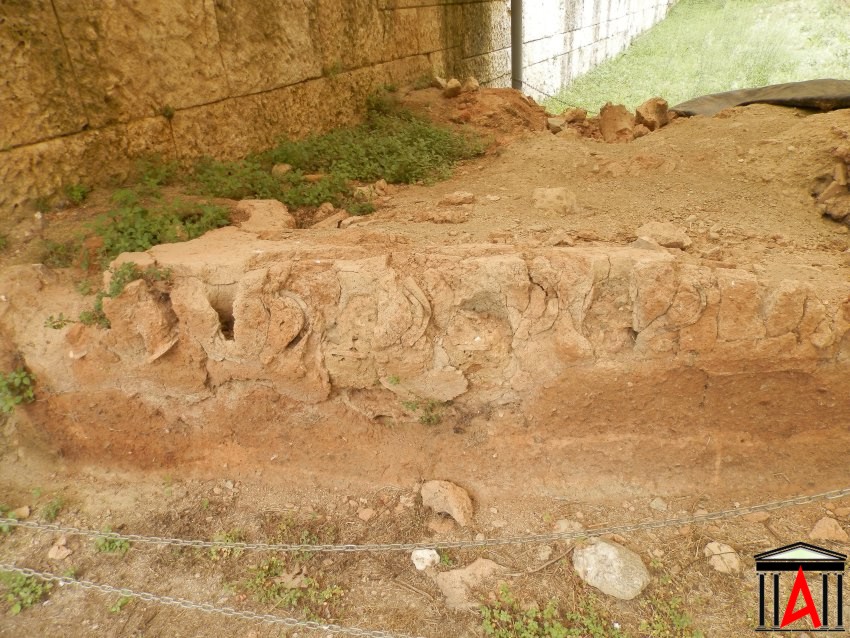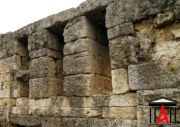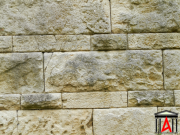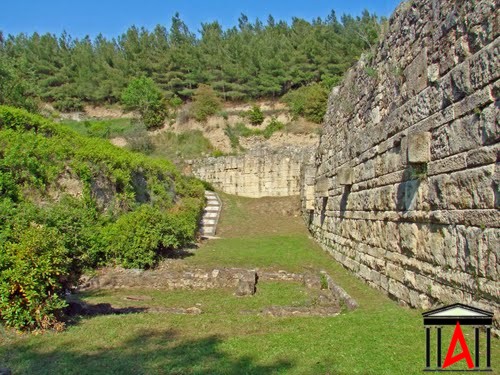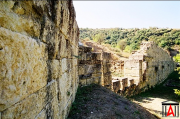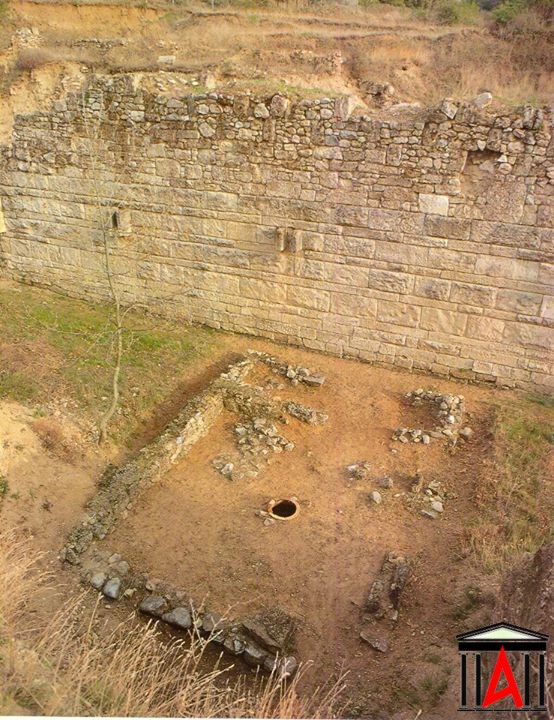NORTH TEICHOS
DOUBLE GATE I – AMFIPOLI
The long wall surrounded and protected the ancient Amphipolis from the Raiders. From this today distinguished several departments in upper height of 7.52 m. Kept snatches the North wall, the southern and Western, but some little parts of Eastern. The best preserved section of the long wall of Amphipolis saved North and specifically in the area where the buildings of the old railway station, as in the area of ancient wood deck. Specific, in the northeast of the archaeological site, behind the old railway station buildings and today the space where the annual Festival of Amphipolis, between two steep hills formed a smooth triangular Valley. Throughout the length of the base of the triangle,alongside the Struma and at a distance of approximately 200 m. from that stretches a wonderful extant section of the wall, which in many places is maintained at a height of 7,25 m. It is a part of the North wall, length 167 m., who is a typical example of military architecture. after a corner of the wall,We meet a unique technical work: a large stormwater sewer pipeline length 8,05 m.
And despite the distance between the pillars is, only 0,20 m. about- space prevented the penetration of the enemy the walls between culverts – the openings get smaller in 0,10 m. nesting home among triangular iron pillars. There are holes and pencil for the grounding of the home. West, inside the wall,revealed impressive scale – Thirteen tiers are in place – that leads to the wall and walk into some the Esplanade. At the base of the scale is saved one wicket triangular cross-section, place a Sagittarius or the guardian of the portal, located near. On the North wall there are two gates. The first, in the West, It is located in the Hellenistic period and highest level during 2 m. from the bedrock of the portal wall was opened when the alluvial deposits and deposits of sediments closed the classic, the so-called second gate, to the right of the first, the initial level of the wall. It is one of the most important gates, Obviously for the, According to Thucydides, «Gates» thrakies, where there are indoor and outdoor courtyard. Even, West encounter a second band conductors, conservation excellence. The wall with an Assembly divided up equally excellent system, saved here in height 6,25 m., terminates in vertical sidewall of the Western Hill.
PORTAL II – AMFIPOLI
THESMOFORIO-NIMFEO AMFIPOLI
In front of and parallel to the North wall revealed a small rectangular edifice , split with interior wall in two places different phases anisomegetheis. The building is the oldest of the wall. In the middle of some of the larger space found in the position of a shaft, formed by large bottomless, positioned in the ground, in depth 0,80 m., whose bottom had been cut off before placing. Around the mouth of the pithoy, diameter 0,50 m., they were covered with a clay blanket, found artifacts that identify the site, as various figurines. In the southeast corner of the larger space found intact parts, It contained about fifty vessels, arranged in an orderly close to walls. From these, the three are kernoi, and other ydries, which, as alleged by their small dimensions, It must have been votive offerings. From the votive offerings is evidence that it is a small shrine of female deity, as it is believed to be from the Thesmophorion or Nymphaion female figurines, the kernoys, the road paved with soil. Some of the figurines and vessels of the sanctuary could amount up to the mid-5th century BC. and based on the findings of the study have yet another proof that the site of Amphipolis was inhabited before the 437 e.g..
The northern wall dates between the years 424 – 422 e.g.. According to the narrative of Thucydides mentioned in battle Klewnos and Brasidas in front the walls of Amphipolis. Moving west from the northern wall we meet in front of the home of a large classical foundations, the wall separates in the Middle, without the follow-up internally by this. Therefore the House is oldest of the wall, whose Foundation destroyed a part of the. So if the House dated before 437 e.g., before the founding of Amphipolis by the ' Agnonas, then we have further proof that in place of Amphipolis predates another settlement. According to Thucydides were the "nine Streets".
Moving west across the Gate II, It has successive phases and in the last phase of the outer courtyard. At a distance 70 m. about West of the gate b’ There is a circular tower, that perikleisthike into another, square, in a repair of the wall in the Hellenistic era, replacing the circular. Between gate b’ and the circular tower there are drainage of stormwater drain assemblies. The entire wall, and the round tower is justified in sandy soil of Bank of the Struma. The section of the wall between the circular tower and the gate of the bridge is riddled with drainage pipelines.
PORTAL III AMFIPOLI
Five of the gates of the long wall already have researched excavation, of which, the gateway Iii is most important and is located at the site of wood deck, in the North wall. Located at a distance of 61,50 m. West of the circular tower. It is the largest and most fortified city gate, dimensions 13,40 m. επί 9 m., with walls thick 2 m. about. The architect of the portal of the bridge took care particularly about safe from the dangers of flooding of the river, strengthening internal and external walls and the entire range of the gate with a crowd piles. As an additional protection project was constructed at the level of eythyntirias a wall in the shape of a w, In this great gateway ended the ancient, wooden bridge, reported by Thucydides to the events of the battle Klewnos and Brasidas, the 422 e.g..






